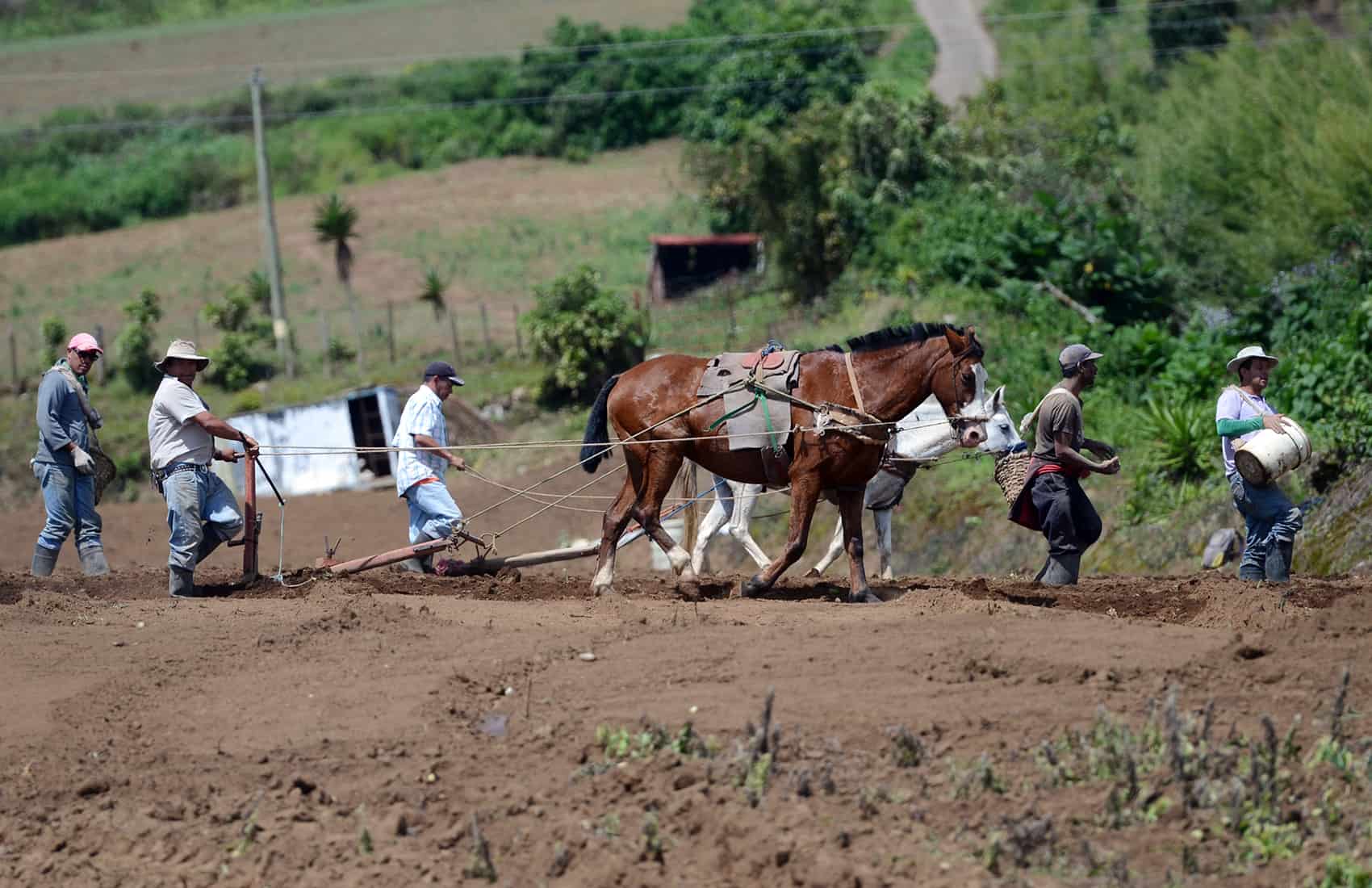Related: Where is the ash from Turrialba Volcano headed? Track it on OVSICORI website
An agricultural area larger than 228 football fields has been affected by volcanic eruptions in Costa Rica that began on Oct. 29, according to Felipe Arguedas, director of extension services at the Agriculture and Livestock Ministry, or MAG. As farmers wait to see how much of their crop is salvageable, the Turrialba Volcano’s relative calm continues.
On Wednesday, Carlos Ramírez, a volcanologist at the University of Costa Rica, told The Tico Times that the volcano was relatively calm but that the crater was still belching a fumarole 500 meters high of steam and ash. Volcanologists have been monitoring eight seismic stations in and around the crater for any signs of increasing activity. Last week, the Turrialba Volcano, located 60 kilometers northeast of the capital, saw its largest eruption in 150 years.
Arguedas said that 70 hectares of farmland have been affected by ash and acid rain within a 6-kilometer radius from the crater. The MAG official told The Tico Times that 40 hectares worth of potatoes already were late into the season and would likely see a successful harvest. The same could not be said for another 30 hectares of delicate leafed plants, such as lettuce, strawberries and carrots planted along and near the nutrient-rich slopes of the volcano.
See also: Ash from Costa Rica’s Turrialba Volcano reaches province of Limón
Ramírez said falling ash and acid rain had burned the leaves of plants in the area. The volcanologist pointed out that several years of lesser activity at the Turrialba Volcano have made more acidic rain part of the ecosystem, and he said there currently is no reason to worry about long-term consequences for human health.
Recent rains have been helping to wash clean the grass and hay on which 6,000 cattle in the area depend. Arguedas said that 250 heads of cattle have suffered respiratory problems from the ash. MAG has called for the evacuation of 227 of the stranded bovines, according to a previous statement. The director said that there is a need for more feed as rescued bovines from across the affected area start to concentrate on the same pastures.
MAG still does not have an estimate for what the economic cost of the eruptions could be for the area’s famers and ranchers.
Iván Brenes, president of the National Emergency Commission (CNE), reported that about 165 people are estimated to be living within the radius most affected by the eruptions, during a press conference at Casa Presidencial on Tuesday. The Tico Times previously reported that 11 people had been evacuated on Thursday, Oct. 30, when the CNE upped its warning to a Yellow Alert.
The National Water and Sewer Institute reported Tuesday evening that the water supply in the San José Greater Metropolitan Area had not been contaminated by falling ash. Likewise for streams and wells closer to the volcano.
Brenes said the CNE had 23 rescue workers, 15 vehicles and two ambulances on standby, alongside firefighters and National Police in the event of an emergency.
President Luis Guillermo Solís is set to make his second visit to the affected communities near the volcano on Thursday.






